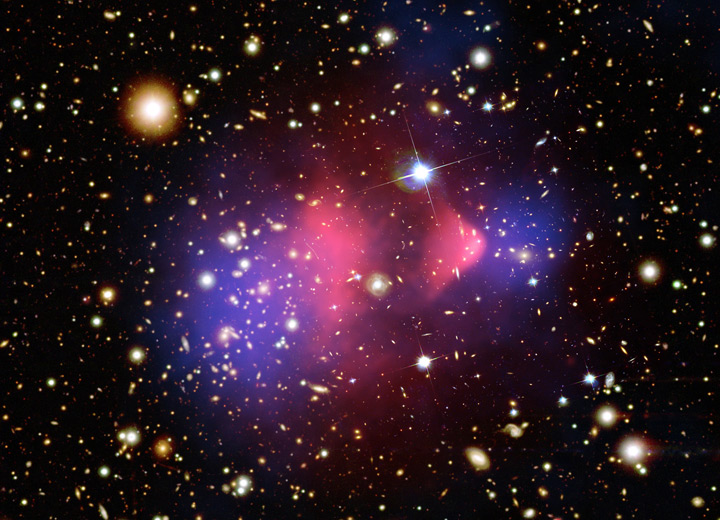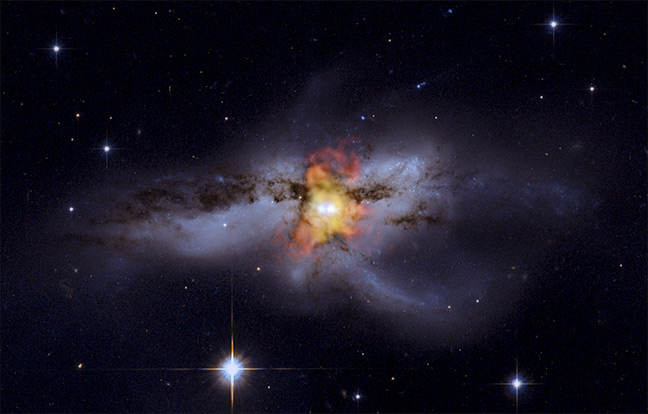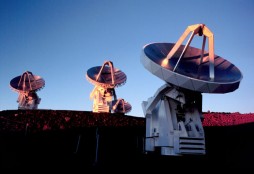From the Secretary: Unlocking the mysteries of the universe
From our earliest beginnings, humans have peered into space to better understand the universe, making observations of what we could see first with only our eyes, then later with simple telescopes that allowed us to see further and understand more. By the end of the 20th century, large ground-based telescopes and orbiting observatories such as Hubble have taken our observations far beyond our own galaxy. Today’s investigations of “dark energy,” “dark matter” and planets outside our own solar system promise even greater progress in “unlocking the mysteries of the universe,” one of the Smithsonian Strategic Plan’s four grand challenges.
NASA’s Chandra X-ray Observatory illustrates the astonishing results of recent innovations. The Smithsonian Astrophysical Observatory plays a critical role in Chandra’s operations, by controlling its science and flight operations from the Chandra X-ray Center in Cambridge, Mass., and building its High Resolution Camera.

Credit: X-ray: NASA/CXC/CfA/M.Markevitch et al.; Optical: NASA/STScI; Magellan/U.Arizona/D.Clowe et al.; Lensing Map: NASA/STScI; ESO WFI; Magellan/U.Arizona/D.Clowe et al.
(This composite image shows the galaxy cluster 1E 0657-56, also known as the “bullet cluster.” This cluster was formed after the collision of two large clusters of galaxies, the most energetic event known in the universe since the Big Bang.)
Smithsonian astrophysicist Harvey Tananbaum, a pioneer in X-ray astronomy, is the Chandra X-Ray Center Director. He explains that Chandra has provided the best direct evidence to date that most of the universe’s matter is “dark,” its presence detected only indirectly by observing its gravitational pull on normal matter. Dark matter cannot be seen: it is inferred to exist from its gravitational effects but it does not emit or absorb detectable amounts of light. Dark energy is how scientists refer to the mysterious force that permeates all of space and is thought to be responsible for the expansion of the universe.“Chandra has helped track how dark energy has slowed the growth of galaxy clusters and offered us clues about what the universe’s ultimate destiny might be,” Tananbaum says.
(This image of NGC 6240 contains new X-ray data from Chandra (shown in red, orange, and yellow) that has been combined with an optical image from the Hubble Space Telescope originally released in 2008. The two black holes are a mere 3,000 light years apart and are seen as the bright point-like sources in the middle of the image. Scientists think these black holes are spiraling toward each other—a process that began about 30 million years ago.)
Chandra can follow matter heated to temperatures of millions of degrees as it swirls toward the black holes that lurk in most galaxies. Near the black hole, instability can trigger winds of hot gas and jets of energetic particles. These outflows then limit the further growth of large, massive galaxies. Chandra has also revealed amazing details about the dynamics of shock waves generated by exploding stars. Chandra’ s many accomplishments are explained on its award-winning website.
Recently, NASA awarded $500 million to SAO for Chandra’s second decade. This award, with a three-year base and six years of additional funding options, will boost the total invested by NASA in SAO’s role in Chandra to about $1.3 billion—the largest cumulative sponsored project in SI history.
SAO has participated in other NASA-funded astronomy programs, including the Spitzer Space Telescope. The designer of Spitzer’s Infrared Array Camera, Dr. Giovanni Fazio, delivered this year’s Secretary’s Distinguished Research Lecture. SAO researchers also contribute to NASA’s Kepler Mission, a space telescope that already has discovered five new planets orbiting five different stars outside our solar system. It is on such planets that scientists focus their search for possible life forms elsewhere in the universe.
In addition to space-based telescopes, SAO also uses ground-based facilities such as the Submillimeter Array on Mauna Kea in Hawaii and Arizona’s Multiple Mirror Telescope—both have helped our scientists address fundamental questions including how our universe began, how it is structured, and how it has evolved.
Recently, at the Museum of American History—where the 1865 Vassar College Observatory telescope used by America’s first female astronomer, Professor Maria Mitchell, anchors the Science and Technology Wing—I listened to biographer and historian Richard Holmes discuss his new book about the Enlightenment, The Age of Wonder: How the Romantic Generation Discovered the Beauty and Terror of Science. Considering the remarkable scientific advances today, he concluded: “If there is a second Age of Wonder, I believe it will be driven by the United States of America, and that the Smithsonian will be at the heart of this new possibility.” Looking into the Institution’s bright future, as exemplified by our extraordinary work uncovering the secrets of the cosmos, he just might be right!
Posted: 1 June 2010
- Categories:





